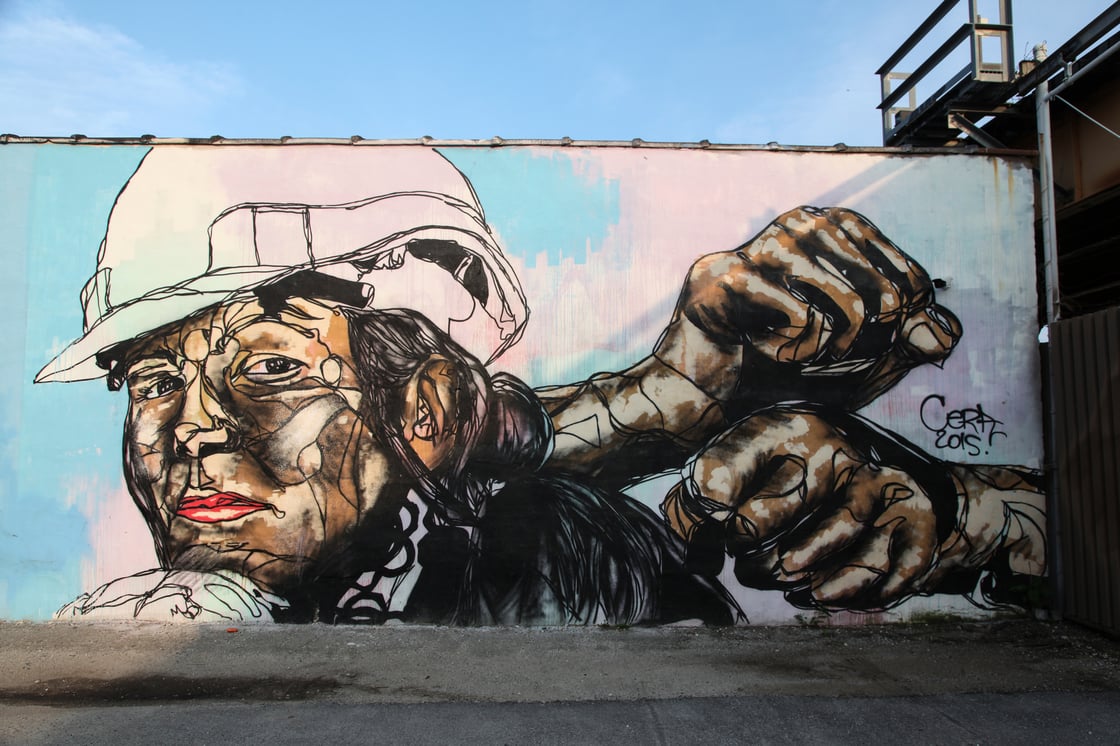This past weekend, my husband and I took a quick trip to Chicago to celebrate his 40th birthday.
Ironically, two of the most important people in my life – my sister and my husband – were born just 20 days apart. So, suffice it to say, I’ve been in major planning + celebration mode these last few weeks.
Warren is a die-hard Cubs fan, always has been. He also loves jazz music and Street Art – so we made sure to experience all these things on his big day.
We loved seeing the Cubs win at Wrigley Field, and we enjoyed seeing legendary sax player, Gary Bartz play at The Jazz Showcase – but my favorite part of the weekend was the Street Art tour we took on Saturday morning. If you visit Chicago, I highly recommend booking a tour with Offbeat Street Art.
I assumed the tour would mostly involve walking around Chicago, looking at some art, and maybe hearing a little bit about each piece’s significance – but it was actually so much more.
Brian, our tour guide, was highly educated on the subject of Street Art and graffiti and dove deep into the history and evolution of Street Art culture. It was incredibly interesting.
Brian shared that contemporary Street Art developed in the U.S. in large cities and urban landscapes, often as medium for expressing social or political messages. He shared that much of the impetus behind Street Art came from an attempt to identify and protect one’s community.
In the 1960’s and 70’s, as redlining continued to push poor and marginalized families to the edges of their communities, working class people began to express their presence through artistic expression. It became a nonviolent way to react, protest, and rebel against systems of oppression.

For me, one of the most powerful moments of the tour was when Brian said, “Often, the intention behind Street Art is to create a way for the unseen to be seen.”
He shared that “tagging” or signing your name in graffiti art, is the artist’s attempt to say “I am here. I may not be represented in the decisions you are making about my community, but you will know my name.”
Often, street artists will attempt to tag places that are out of reach and, thus, hard to erase – like tall buildings, bridges, and train cars.
Hearing Brian speak about the history and context of Street Art inspired me to look at graffiti and street murals through a new lens – an invitation to see something, or someone, that otherwise might not be seen.
I think you’ll know where I’m going with this…
One of my favorite parts – or perhaps my most favorite part – of being a therapist is the privilege to see someone who might otherwise not be seen.
As therapists, we are given the opportunity to be curious, to seek to understand, and to be a witness of the deeper thoughts, feelings and experiences of another person.
I’m sure we’ve all had those powerful, almost unexplainable moments, when a client feels seen, sometimes for the very first time, during a therapy session. I no longer see clients, but I can certainly think back to moments when my client and I experienced a human-to-human connection that helped them find healing.
What an honor it is to witness another person’s bravery, to walk with them on their journey toward self actualization, to experience them metaphorically tagging their name so that they may be seen by the world.
I’m curious how this lands with you today. Do a few clients come to mind when I talk about the powerful moment when someone who is unseen begins to feel seen?
If you have any reflections you’d like to share with me, I’d love to hear them.

CEO/Co-Founder, Motivo
rachel@motivohealth.com
Each Monday, I’ll share my perspective on topics that mean a lot to me: growth, resilience, relationships, and leadership.
Get started with Motivo.
Tell us more about yourself and we’ll forward you to where you need to go.
I am a...
We solve
clinical supervision